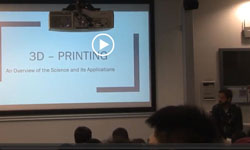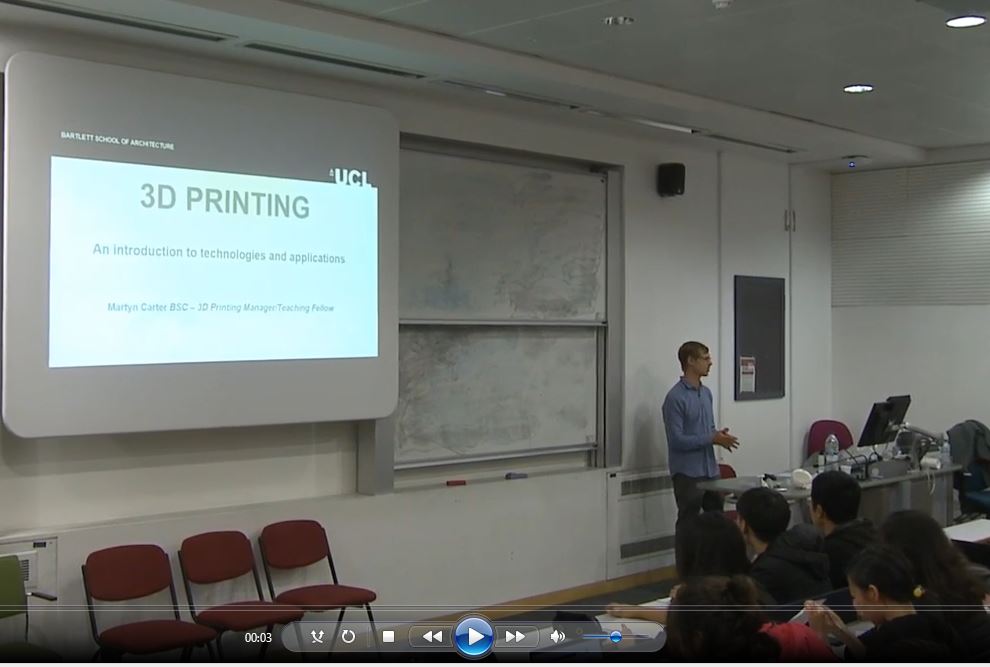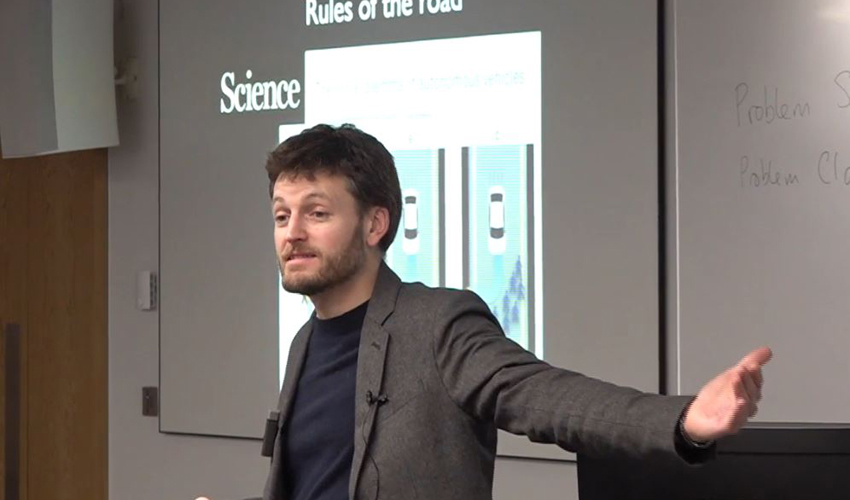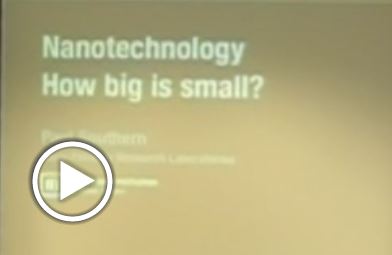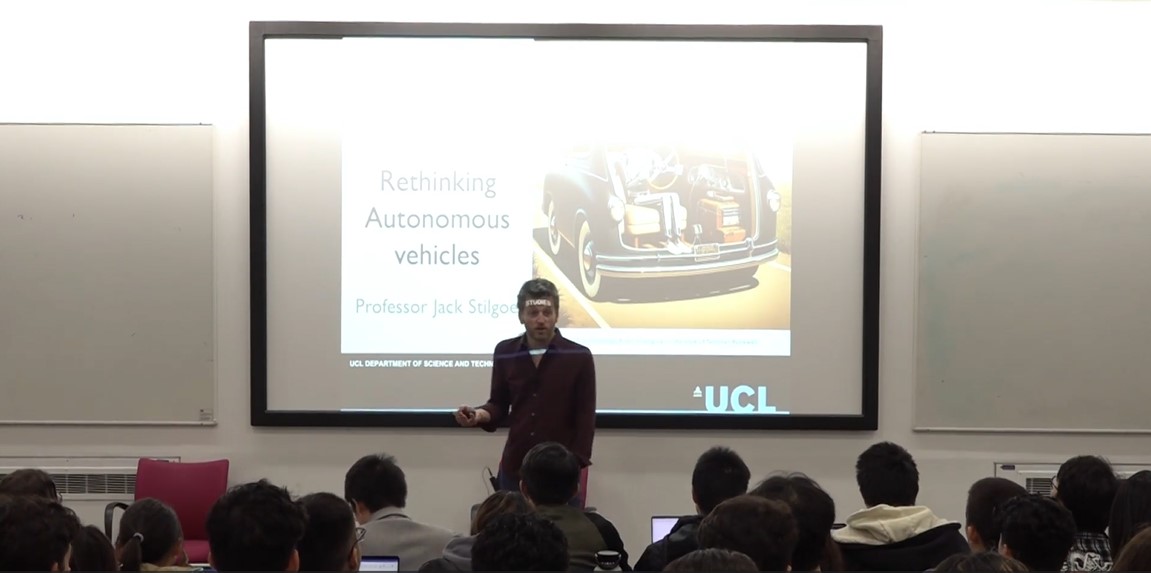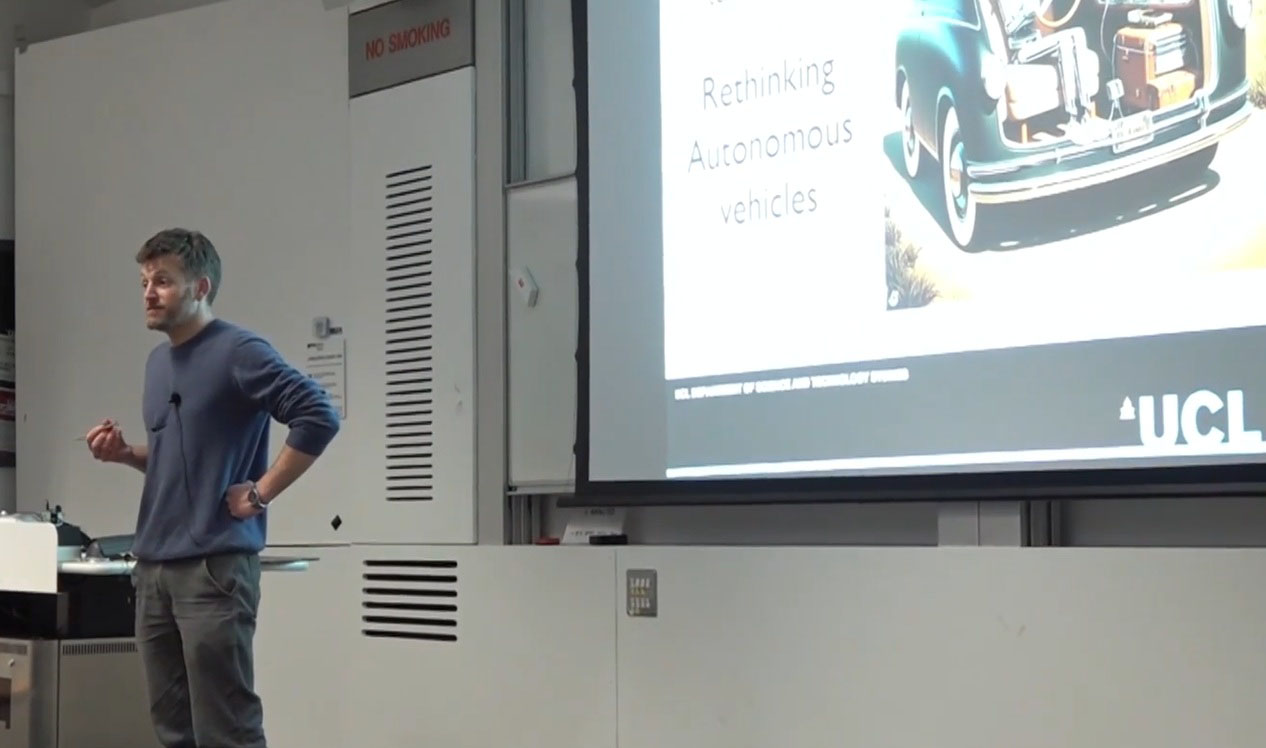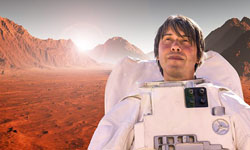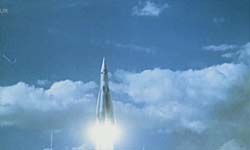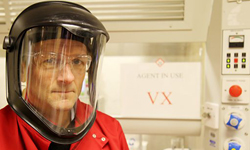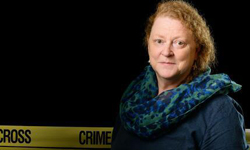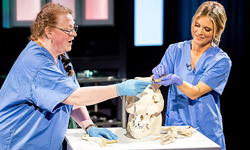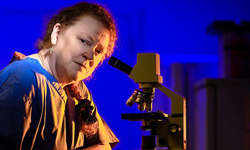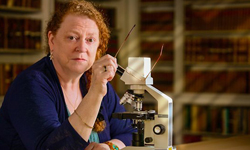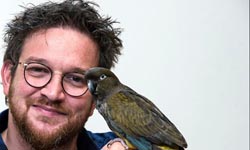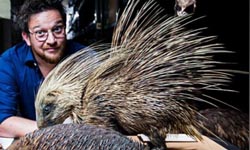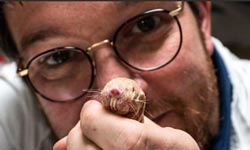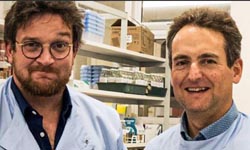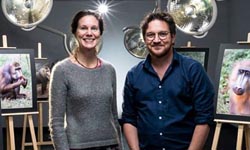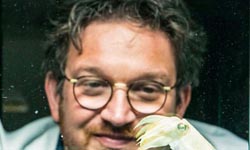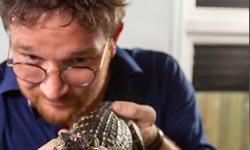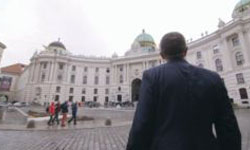Select one or more of these popular tags:
-
3D Printing
-
Dr Yiannis Koutsonas , 2017
Science and Society Lecture - 7th February 2017
- Lectures
- No subtitles
- 42
Science and Society Lecture - 7th February 2017
-
3D Printing
-
Dr Yiannis Koutsonas , 2017
Science and Society Lecture - 10th October 2017
- Lectures
- No subtitles
- 42
Science and Society Lecture - 10th October 2017
-
3D Printing
-
Dr Martyn Carter , 2018
Science and Society Lecture 16/10/2018
- Lectures
- No subtitles
- 46
Science and Society Lecture 16/10/2018
-
Autonomous Vehicles
-
Dr Jack Stilgoe , 2020
Science and Society Lecture 21st January 2020
- Lectures
- No subtitles
- 47
Science and Society Lecture 21st January 2020
-
Liquid Crystal Displays
-
Dr David Selviah , 2012
Diploma Lecture 2012
- Lectures
- Science and Technology
- No subtitles
- 43
Diploma Lecture 2012
-
Nanotechnology - How Big is Small?
-
Paul Southern , 2008
UPCSE 2008
- Lectures
- Science and Technology
- No subtitles
- 50
UPCSE 2008
-
Rethinking Autonomous Vehicles
-
Professor Jack Stilgoe , 2024
Science and Society Lecture
- Lectures
- No subtitles
- 48
Science and Society Lecture
-
Rethinking Autonomous Vehicles
-
Professor Jack Stilgoe , 2024
Science and Society Lecture 25-11-2024
- Lectures
- No subtitles
- 45
Science and Society Lecture 25-11-2024
-
New Scientist
New Scientist is a weekly international science magazine and website covering recent developments in science and technology for a general English-speaking audience.
New Scientist is a weekly international science magazine and website covering recent developments in science and technology for a general English-speaking audience.
-
Brian Cox: Seven Days on Mars
-
Michael Lachmann
With unique access to Nasa, Brian Cox follows Perseverance rover’s search for life on Mars during a critical seven-day period as it undertakes an epic journey across the red planet.
- TV-Recordings
- English subtitles
- 89
With unique access to Nasa, Brian Cox follows Perseverance rover’s search for life on Mars during a critical seven-day period as it undertakes an epic journey across the red planet.
When Neil Armstrong stepped onto the moon in 1969, America went down in popular history as the winner of the space race. But that history is bunk. The real pioneers of space exploration were the Soviet cosmonauts.
- TV-Recordings
- Science and Technology
- English subtitles
- 90
When Neil Armstrong stepped onto the moon in 1969, America went down in popular history as the winner of the space race. But that history is bunk. The real pioneers of space exploration were the Soviet cosmonauts.
Michael Mosley investigates Porton Down, Britain's most secretive and controversial military research base. He comes face to face with chemical and biological weapons old and new.
- TV-Recordings
- English subtitles
- 60
Michael Mosley investigates Porton Down, Britain's most secretive and controversial military research base. He comes face to face with chemical and biological weapons old and new.
-
Measuring Mass: The Last Artefact
-
Jaime Jacobsen
A piece of metal that defines the mass of a kilogramme has, over time, lost the equivalent of the weight of an eyelash. What are the consequences for how we measure our world?
- TV-Recordings
- English subtitles
- 56
A piece of metal that defines the mass of a kilogramme has, over time, lost the equivalent of the weight of an eyelash. What are the consequences for how we measure our world?
-
Royal Institution Christmas Lectures 2022
-
David Coleman
Great scientists, even greater questions. Mind-expanding talks and hands-on science, inspiring children and adults alike since 1825. In the 2022 Christmas Lectures, Professor Dame Sue Black will share secrets of the scientific detective process.
- TV-Recordings
- English subtitles
- 180
Great scientists, even greater questions. Mind-expanding talks and hands-on science, inspiring children and adults alike since 1825. In the 2022 Christmas Lectures, Professor Dame Sue Black will share secrets of the scientific detective process.
Professor Sue Black is joined by Emilia Fox and forensic scientists to unlock the mysterious death of a skeleton. With insights from investigations into serious crimes and war zones.
- TV-Recordings
- English subtitles
- 60
Professor Sue Black is joined by Emilia Fox and forensic scientists to unlock the mysterious death of a skeleton. With insights from investigations into serious crimes and war zones.
Professor Sue Black investigates a Christmas murder mystery with leading police experts, forensic scientists and an award-winning dog. Including insights into real serious crime investigations.
- TV-Recordings
- English subtitles
- 60
Professor Sue Black investigates a Christmas murder mystery with leading police experts, forensic scientists and an award-winning dog. Including insights into real serious crime investigations.
A 'heist' has been staged in the Royal Institution. Can forensic evidence identify and convict the individual responsible? Includes insights from real criminal investigations.
- TV-Recordings
- English subtitles
- 60
A 'heist' has been staged in the Royal Institution. Can forensic evidence identify and convict the individual responsible? Includes insights from real criminal investigations.
-
Secrets of Skin
-
Sue Doody
Featuring groundbreaking new science, experiments and leading scientists from a variety of disciplines, the series unravels the natural history of the body's largest organ.
- TV-Recordings
- English subtitles
- 168
Featuring groundbreaking new science, experiments and leading scientists from a variety of disciplines, the series unravels the natural history of the body's largest organ.
Professor Ben Garrod explores how versatile the basic skin structure truly is, revealing how slight adaptations have created birds' feathers and a rhinoceros’s horn.
- TV-Recordings
- English subtitles
- 28
Professor Ben Garrod explores how versatile the basic skin structure truly is, revealing how slight adaptations have created birds' feathers and a rhinoceros’s horn.
-
Secrets of Skin - Episode 2 - Moving
-
Sue Doody
What makes sharks built for speed? How do snakes move without limbs? How do sugar gliders fly without feathers? The answers all lie in their skin.
- TV-Recordings
- English subtitles
- 29
What makes sharks built for speed? How do snakes move without limbs? How do sugar gliders fly without feathers? The answers all lie in their skin.
-
Secrets of Skin - Episode 3 - Protection
-
Sue Doody
Professor Ben Garrod reveals how skin protects vertebrates from extremes of temperature, the harmful effect of UV and a host of living organisms that want to get in.
- TV-Recordings
- English subtitles
- 28
Professor Ben Garrod reveals how skin protects vertebrates from extremes of temperature, the harmful effect of UV and a host of living organisms that want to get in.
Professor Ben Garrod explores how skin has evolved remarkable ways to enable animals to communicate with each other, from vibrant displays of colour to skin pouches to amplify sound.
- TV-Recordings
- English subtitles
- 28
Professor Ben Garrod explores how skin has evolved remarkable ways to enable animals to communicate with each other, from vibrant displays of colour to skin pouches to amplify sound.
What is the most toxic animal on earth? Why is a rhino armour plated? Professor Ben Garrod discovers the complex ways in which skin helps defend animals against threats of all kinds.
- TV-Recordings
- English subtitles
- 28
What is the most toxic animal on earth? Why is a rhino armour plated? Professor Ben Garrod discovers the complex ways in which skin helps defend animals against threats of all kinds.
-
Secrets of Skin - Episode 6 - Sensing
-
Sue Doody
Professor Ben Garrod explores how some snakes can see using heat, how crocodiles feel through their jaws, and how some animals use electricity to navigate their world.
- TV-Recordings
- English subtitles
- 28
Professor Ben Garrod explores how some snakes can see using heat, how crocodiles feel through their jaws, and how some animals use electricity to navigate their world.
Twelve billion miles away a tiny spaceship is leaving our solar system and entering the void of deep space. It is the first human-made object ever to do so.
- TV-Recordings
- Science and Technology
- English subtitles
- 94
Twelve billion miles away a tiny spaceship is leaving our solar system and entering the void of deep space. It is the first human-made object ever to do so.
-
The Joy of Logic
-
BBC
A sharp, witty, mind-expanding and exuberant foray into the world of logic with computer scientist Professor Dave Cliff. Following in the footsteps of the award-winning 'The Joy of Stats' and its sequel, 'Tails You Win - The Science of Chance', this film takes viewers on a new rollercoaster ride through philosophy, maths, science and technology- all of which, under the bonnet, run on logic.
- TV-Recordings
- Computer Science
- English subtitles
- 60
A sharp, witty, mind-expanding and exuberant foray into the world of logic with computer scientist Professor Dave Cliff. Following in the footsteps of the award-winning 'The Joy of Stats' and its sequel, 'Tails You Win - The Science of Chance', this film takes viewers on a new rollercoaster ride through philosophy, maths, science and technology- all of which, under the bonnet, run on logic.


